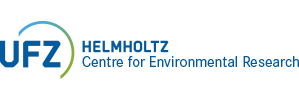Publication Details |
| Category | Text Publication |
| Reference Category | Journals |
| DOI | 10.1016/j.jenvrad.2014.03.005 |
| Title (Primary) | Sample volume optimization for radon-in-water detection by liquid scintillation counting |
| Author | Schubert, M.; Kopitz, J.; Chałupnik, S. |
| Source Titel | Journal of Environmental Radioactivity |
| Year | 2014 |
| Department | GWS |
| Volume | 134 |
| Page From | 109 |
| Page To | 113 |
| Language | englisch |
| Keywords | Radon as aquatic tracer; LSC; Sample volume optimization |
| UFZ wide themes | RU2; |
| Abstract | Radon is used as environmental tracer in a wide range of applications particularly in aquatic environments. If liquid scintillation counting (LSC) is used as detection method the radon has to be transferred from the water sample into a scintillation cocktail. Whereas the volume of the cocktail is generally given by the size of standard LSC vials (20 ml) the water sample volume is not specified. Aim of the study was an optimization of the water sample volume, i.e. its minimization without risking a significant decrease in LSC count-rate and hence in counting statistics. An equation is introduced, which allows calculating the ²²²Rn concentration that was initially present in a water sample as function of the volumes of water sample, sample flask headspace and scintillation cocktail, the applicable radon partition coefficient, and the detected count-rate value. It was shown that water sample volumes exceeding about 900 ml do not result in a significant increase in count-rate and hence counting statistics. On the other hand, sample volumes that are considerably smaller than about 500 ml lead to noticeably lower count-rates (and poorer counting statistics). Thus water sample volumes of about 500–900 ml should be chosen for LSC radon-in-water detection, if 20 ml vials are applied. |
| Persistent UFZ Identifier | https://www.ufz.de/index.php?en=20939&ufzPublicationIdentifier=14916 |
| Schubert, M., Kopitz, J., Chałupnik, S. (2014): Sample volume optimization for radon-in-water detection by liquid scintillation counting J. Environ. Radioact. 134 , 109 - 113 10.1016/j.jenvrad.2014.03.005 |
|
